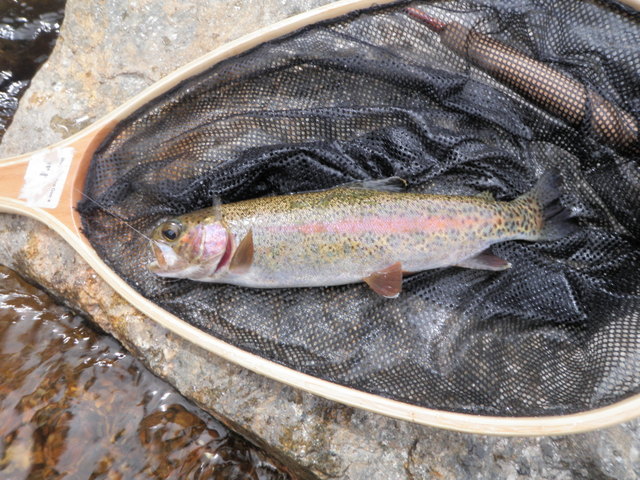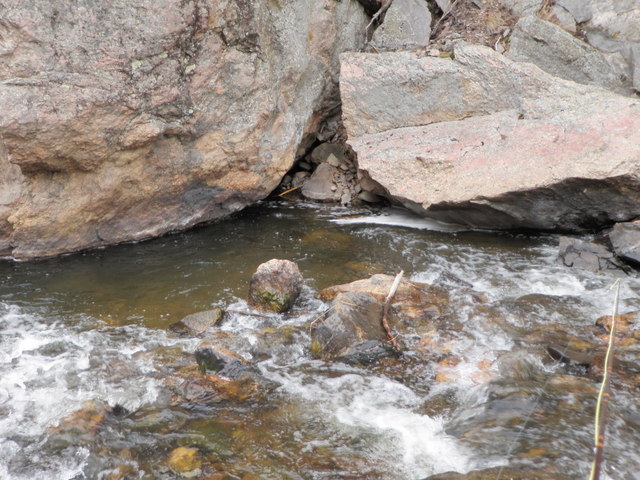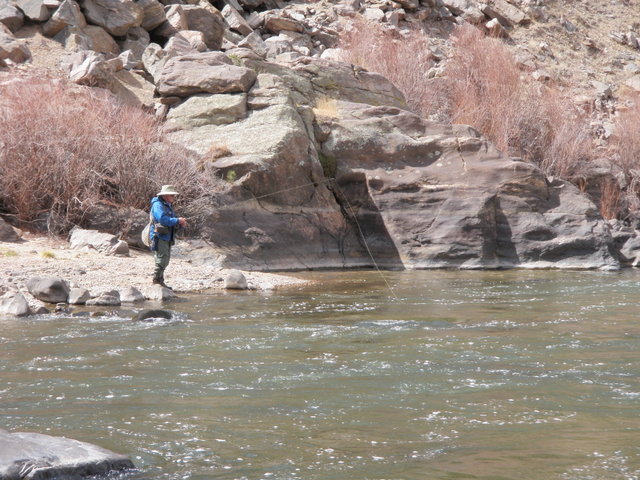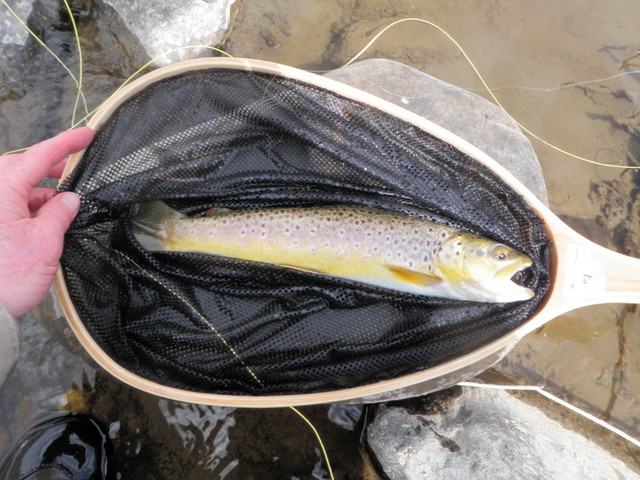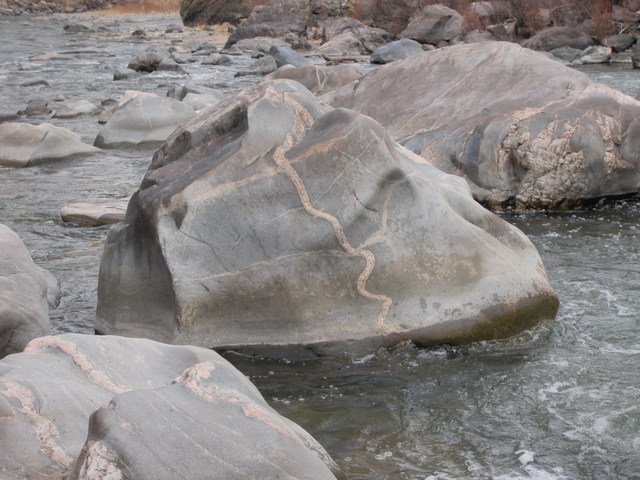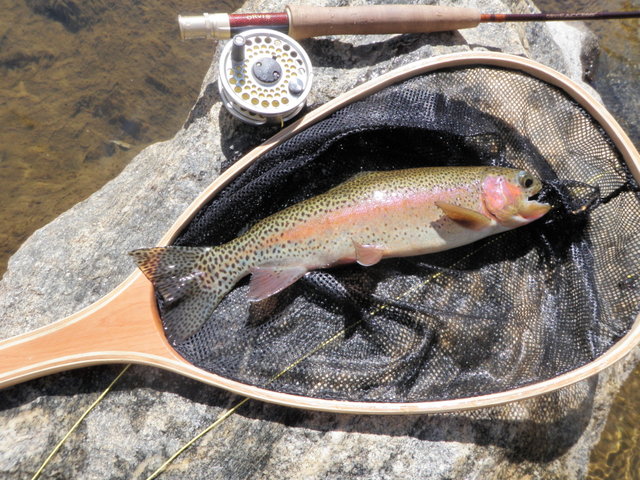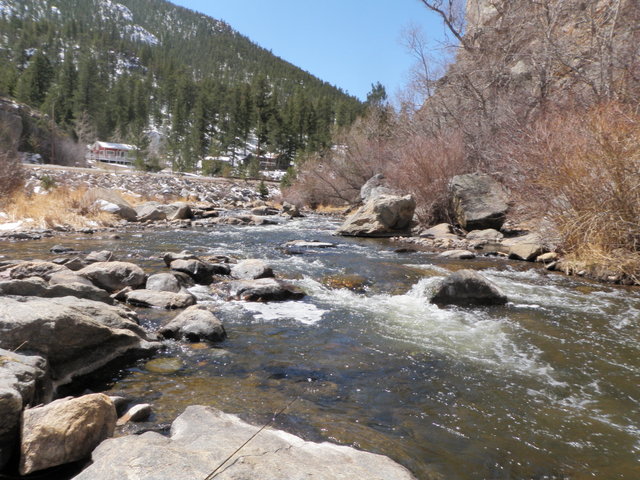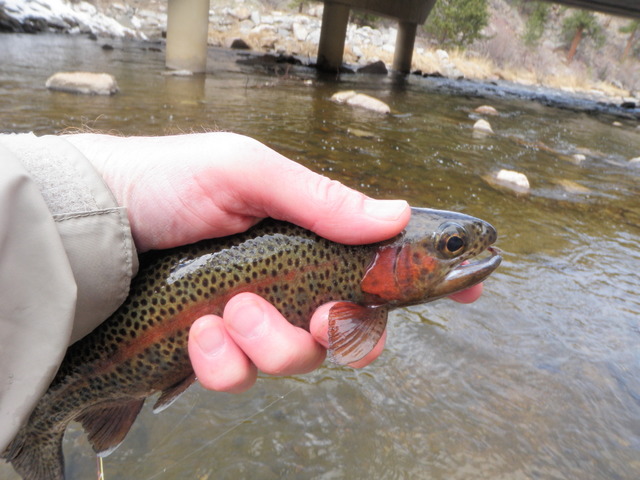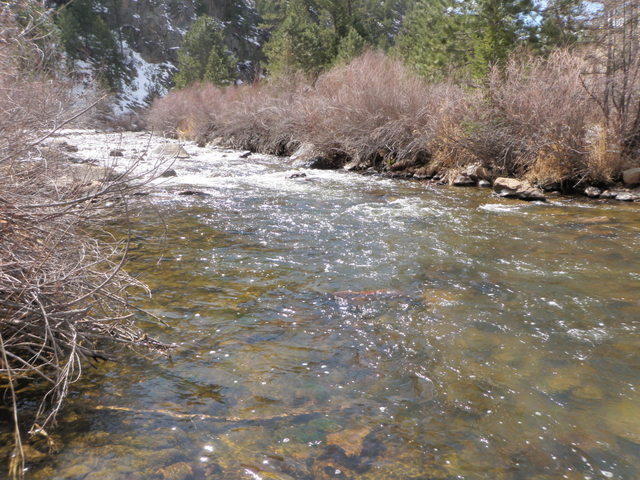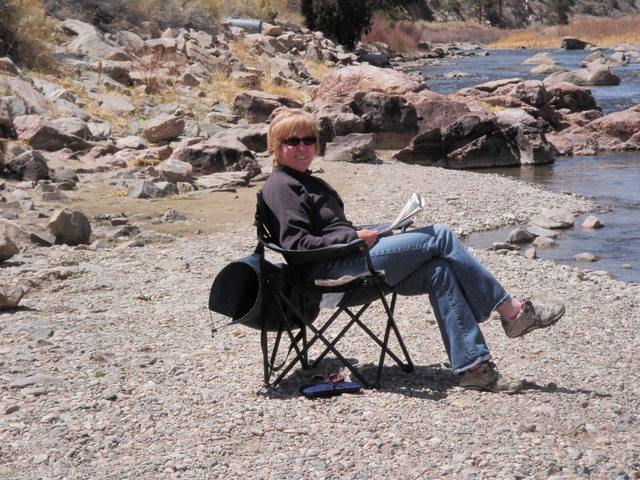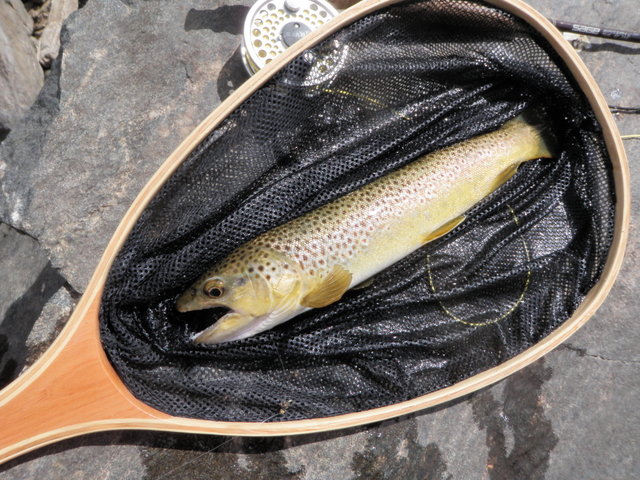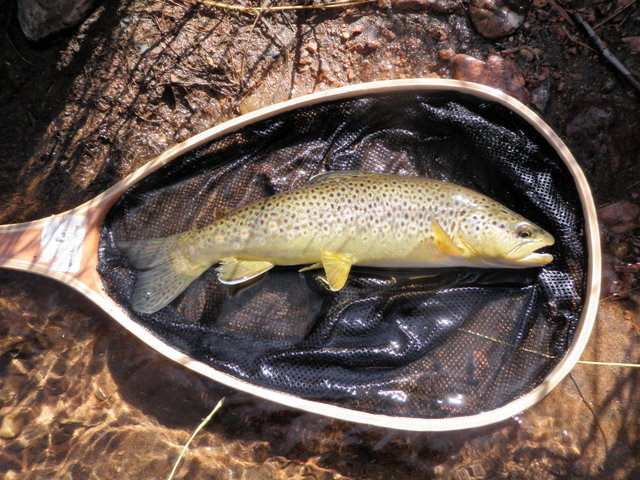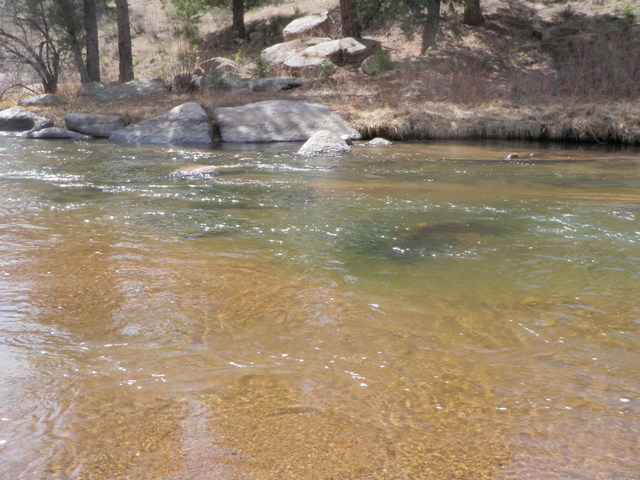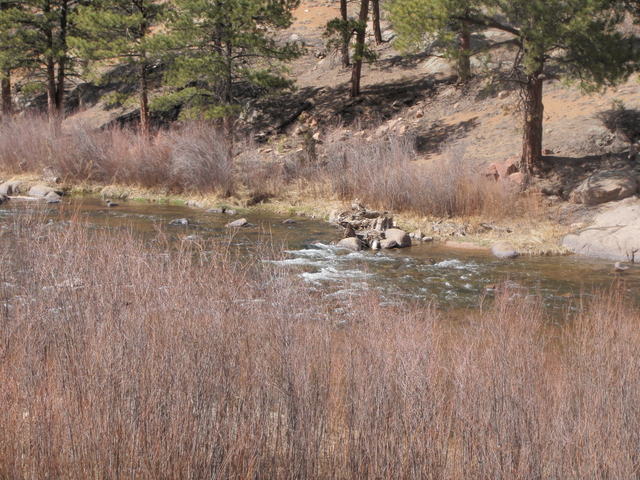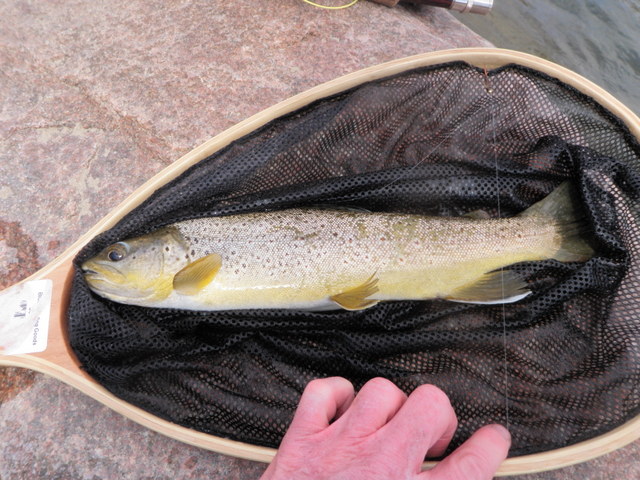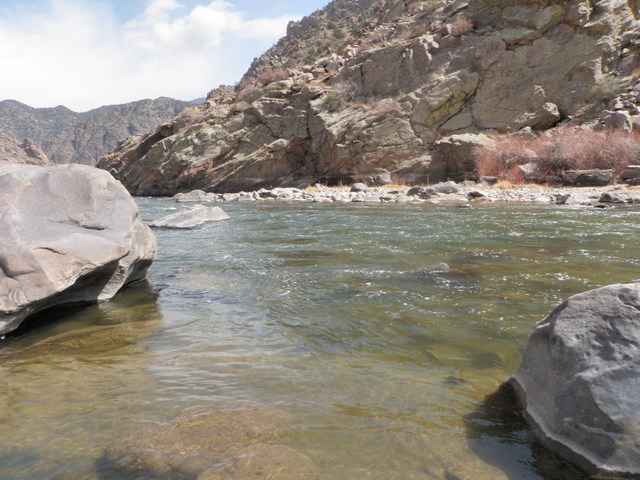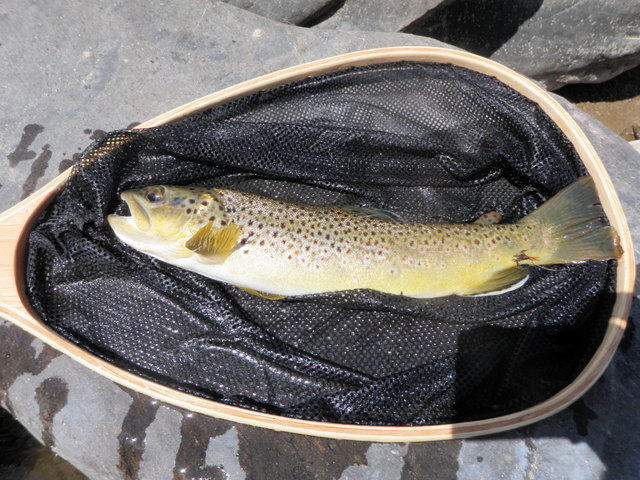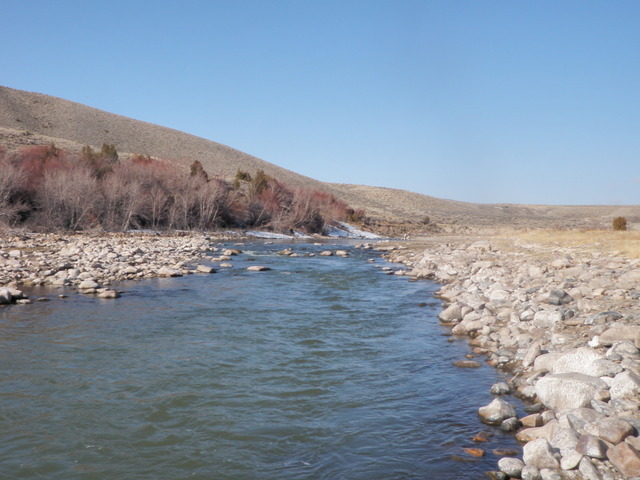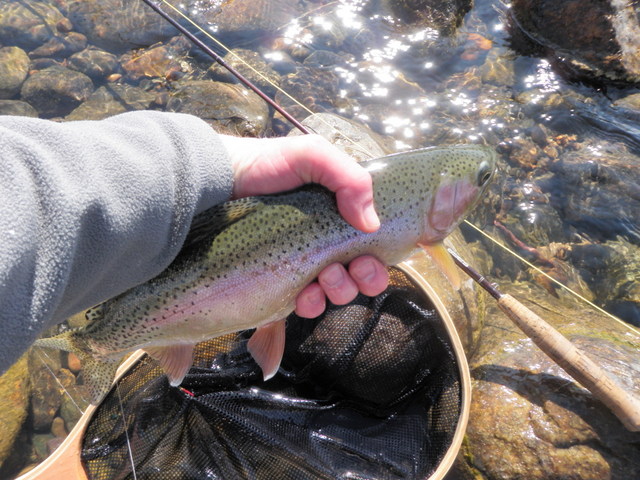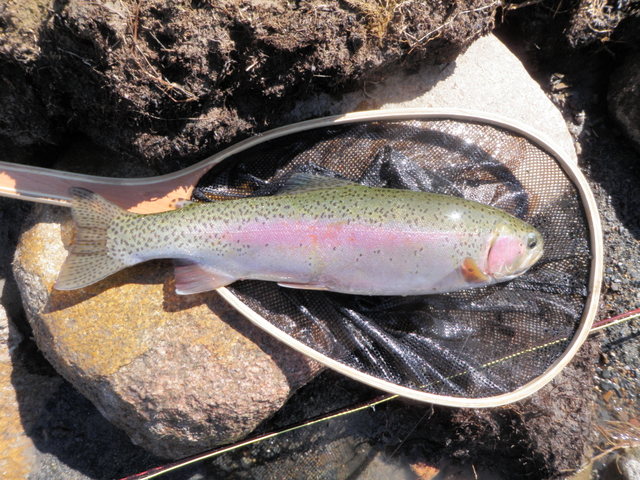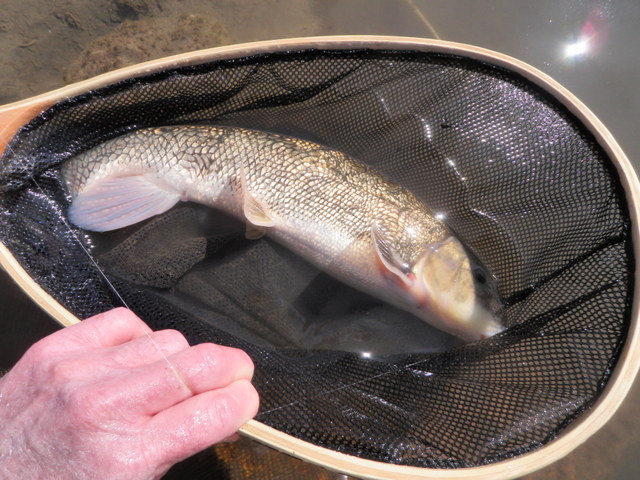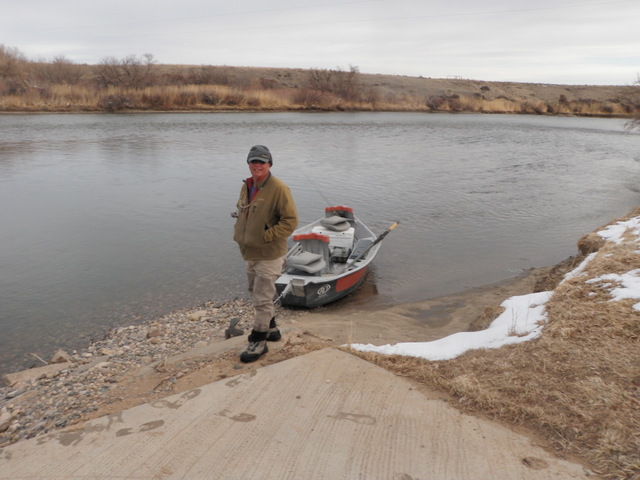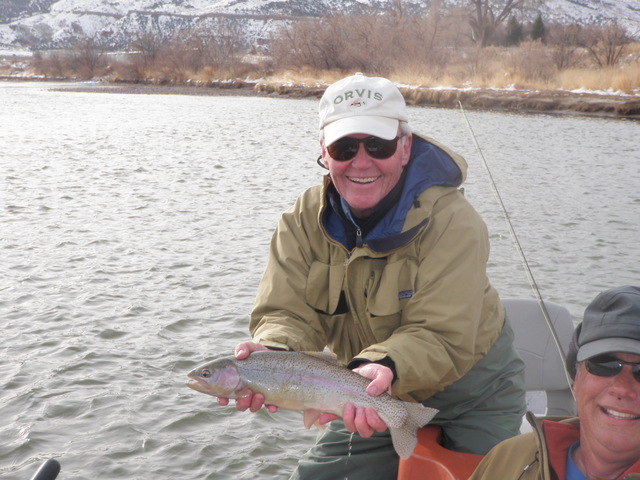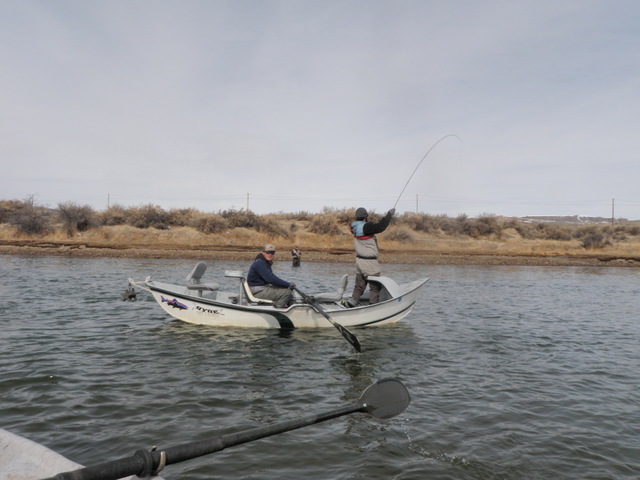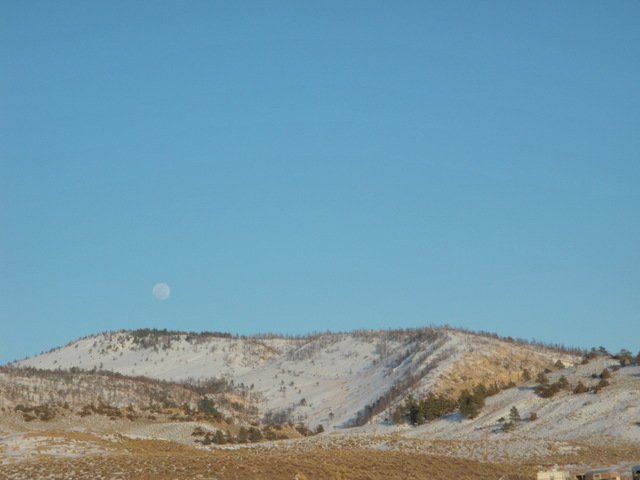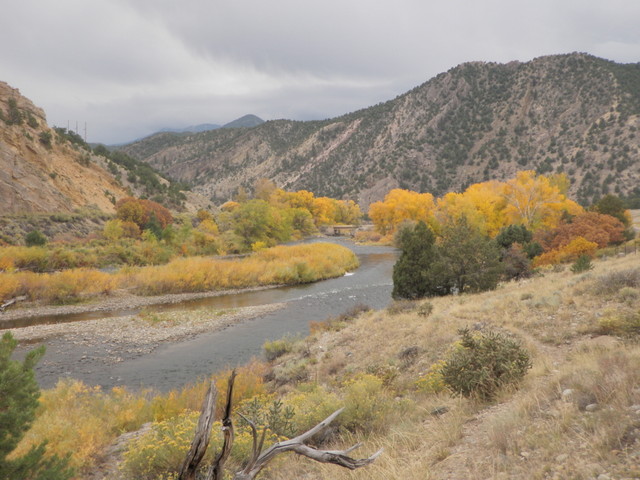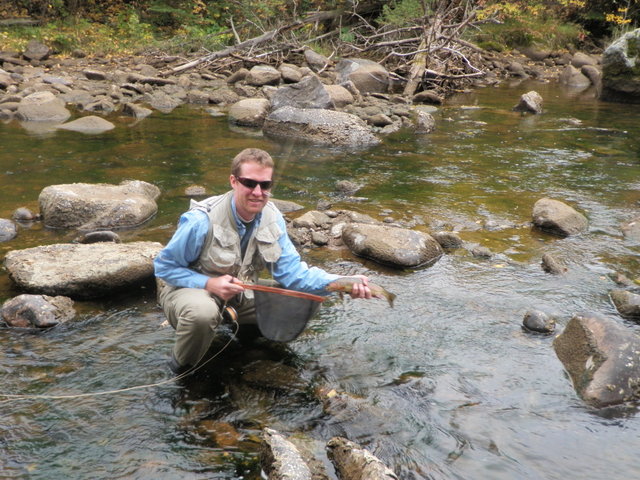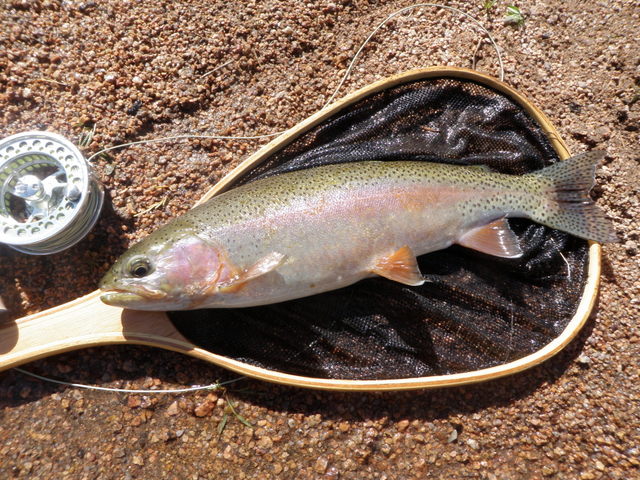Time: 10:30AM – 4:00PM
Location: AM in area across from first large turnaround after private section and in PM from Grandpa’s Retreat upstream
Fish Landed: 10
Big Thompson River 04/28/2013 Photo Album
As the first nice days of spring continued through the last weekend of April and into the first part of the week, I felt a strong urge to spend another day on a Colorado trout stream. I had work commitments for Tuesday and a dentist appointment on Wednesday morning, and then the weather was forecast to take a turn to a cold state again, but Monday was open so I announced my absence and planned a fishing trip. The caddis emergence on the Arkansas appeared to be lagging according to the reports from Royal Gorge Angler and ArkAnglers, and I didn’t want to make the long trip again without the strong probability of hitting the major hatch. I had a nice day on the Big Thompson on April 25 and the flows had increased moderately to 53 cfs, so I made Estes Park my destination. Temperatures were expected to hit 80 degrees in Denver, so I expected a pleasant day in the Big Thompson canyon below Lake Estes.
I departed Denver by 9:30AM and took the I25 North route and then cut over north of Longmont to Lyons to avoid the Boulder Turnpike and the associated road construction. I arrived at the river by 10:15 and I was making my first cast by 10:30. I chose a spot perhaps .5-1 mile below where I’d fished on Thursday where there is a large pullout/turnaround on the right side of the highway when traveling east. Once again I elected to fish with my new Orvis four weight and hiked down the road a bit until I encountered a parked car and looked for the associated fisherman. Sure enough another fisherman was located approximately forty yards downstream from the car, so I turned around and descended the small bank and began fishing above the car and slightly below a long narrow island.
Since the Chernobyl ant and salvation nymph combination worked well for me on my prior visit, I tied on the same combination and began prospecting the likely locations. The area below the island offered no interest from fish and then I worked up the narrow right channel around the island. Toward the tip of the island I made a long 25-30 foot cast and as the Chernobyl made a four foot drift toward me, it paused. I lifted my rod and a spunky brown trout bolted downstream and made several leaps. I landed the spunky guy and quickly released it to go on with its humble life. Things were looking promising as I’d landed a fish in the first 15 minutes on a beautiful spring day. Sometimes the early signs can be quite misleading.
With fresh optimism I retreated to the bottom of the island and worked up the wider and deeper left channel. I spotted quite a few fish, but they were showing no interest in either of my offerings. I fished hard for the remainder of the morning and covered all the likely pools, runs, pockets and riffles until I reached a point across and slightly below my car. I had nothing to show for my efforts except a tiring arm and a few tangles caused by the wind. I saw quite a few fish and experimented with many fly combinations including a deer hair caddis, yellow Letort hopper, beadhead hares ear, RS2, and beadhead pheasant tail.
After lunch next to the stream I converted to nymphing with a beadhead hares ear on top and a RS2 on the bottom. There were two very nice deep runs near my lunch spot and 10 yards upstream where I was certain the nymphs would produce, but my confidence was misplaced. I looked upstream and noticed another fisherman had cut in fifty yards above me and I realized I would not be able to progress further in this area. I did manage to land a second small rainbow in a pocket above the deep run, but then I was forced to return to the car and evaluate my next move.
My next move was to drive further downstream and look for open pullouts. Quite a few fishermen were also drawn to the river by the nice weather forecast, but a mile or so of travel yielded a small pullout just before the dirt road that leads to Grandpa’s Retreat. I quickly slipped into the space and grabbed my rod and walked down the road to a point just above the no trespassing signs. I removed the strike indicator and split shot and decided to return to my gold standard; a Chernobyl ant trailing a beadhead hares ear. Unfortunately the value of gold must have depreciated because these flies were not producing results other than a few refusals to the Chernobyl. Clearly the fish were looking up, but what would make them close the deal? Perhaps a smaller attractor was the answer, and could they be looking for wind blown ants on the surface? I found a lime green trude attractor in my patch and then added a parachute black ant. The white wing of the trude would allow me to follow the two dry flies.
By this time on Monday another huge factor came into play…wind. It had been vexing in the morning, but now the velocity really picked up. In the AM the wind was largely a cross wind, and this made it quite difficult to deliver my flies with any sort of accuracy. In the early afternoon the wind was a headwind and in order to cast my flies, I had to overpower the forward stroke. This allowed me to get the flies upstream, but I couldn’t check my cast and create slack to counteract drag. This may explain my lack of success with dry flies and the greater than normal refusals. The trude and ant combination proved to be no different, and I observed two or three refusals to the trailing ant.
As the afternoon moved along some high clouds blocked the sun and I began to observe some BWO’s ascending from the surface of the stream, and it wasn’t long before I noticed some rising fish. I clipped off the trude and ant and tied on a CDC BWO to see if I could cash in on the surface feeding activity. Unfortunately I lost awareness of my position and hooked my newly tied-on fly high in a tree, and spent a fair amount of time bending the limb down to retrieve it. I moved upstream a small distance and guess what happened? I did it again and scrambled to remove my fly a second time. This removal was much more difficult than the first, and I created quite a tussle with the tree. At last I was free and ready to focus on the rising trout, but as I reached for my plastic floatant dispenser that is tethered by a section of backing and usually lodged in a small pocket on my frontpack, I discovered that it was missing and all that remained was the frayed end of my backing cord. I didn’t relish the idea of fishing dry flies without floatant so I retraced my steps to the scene of my battle with the tree and sure enough found the red capped floatant bottle on the rocks beneath the tree. I knotted the remaining backing cord and resumed my quest for trout. It was proving to be one of those days, and I was mentally thankful that I hadn’t broken my rod or reel, fallen in the river, or punctured my waders.
Finally I was positioned by a nice stretch of river of moderate depth and spotted rising fish. It was still difficult to place my casts with any degree of accuracy using the tiny CDC BWO and without introducing the dreaded drag, but I did manage to land eight trout in the 8-12 inch range between 2PM and 4PM. I discovered that getting above rising fish and making casts down and across and then letting the fly drift downstream to the position of the riser was the most effective method of catching fish. This was easier said than done, however, and not all situations allowed me to execute this technique without spooking the fish.
By 4PM I’d wrestled with a couple more trees and lost a couple CDC BWO’s and the hatch seemed to be waning. I was weary of fighting the wind and the everpresent tangles and tree limbs so I decided to retreat to the car. It was a tough, humbling day on the Big Thompson and I was pleased to have landed 10 fish and not injure myself in the process. I did discover that there are quite a few fish in the stretch from Grandpa’s Retreat boundary back up to where the Big Thompson parallels the highway, and this information will prove useful in the future.

